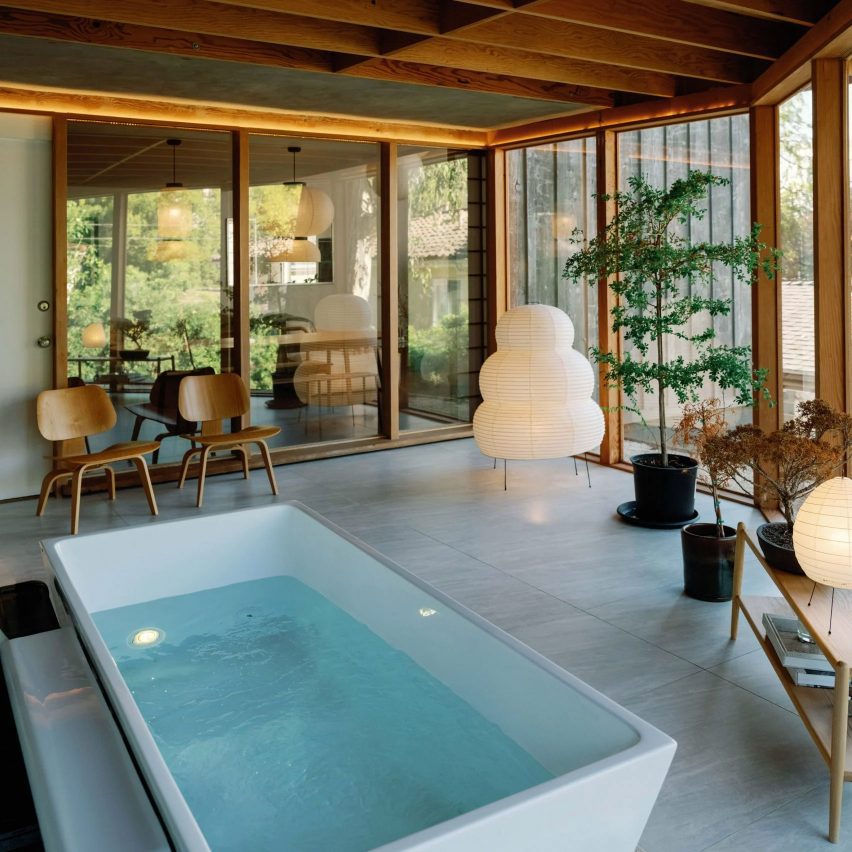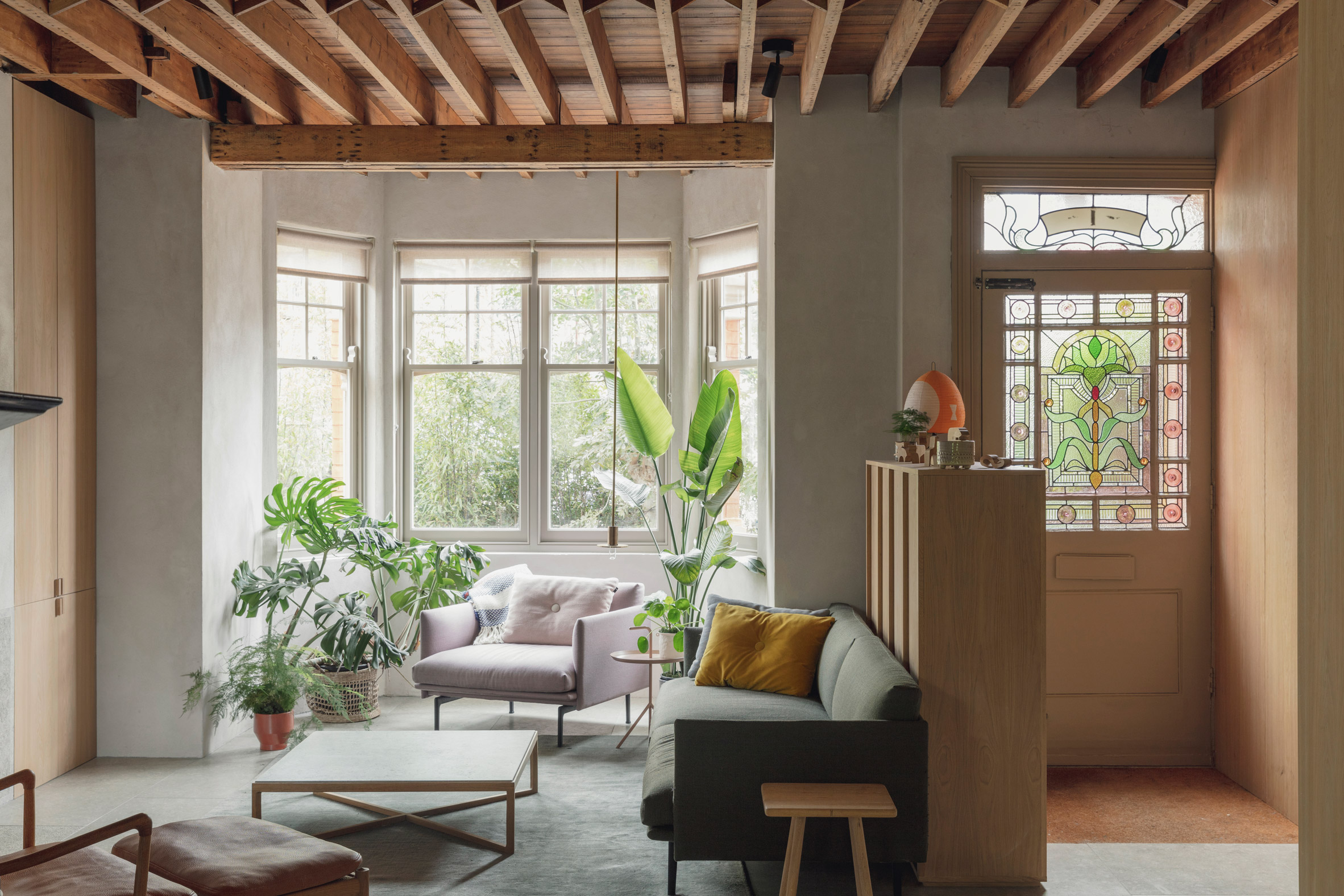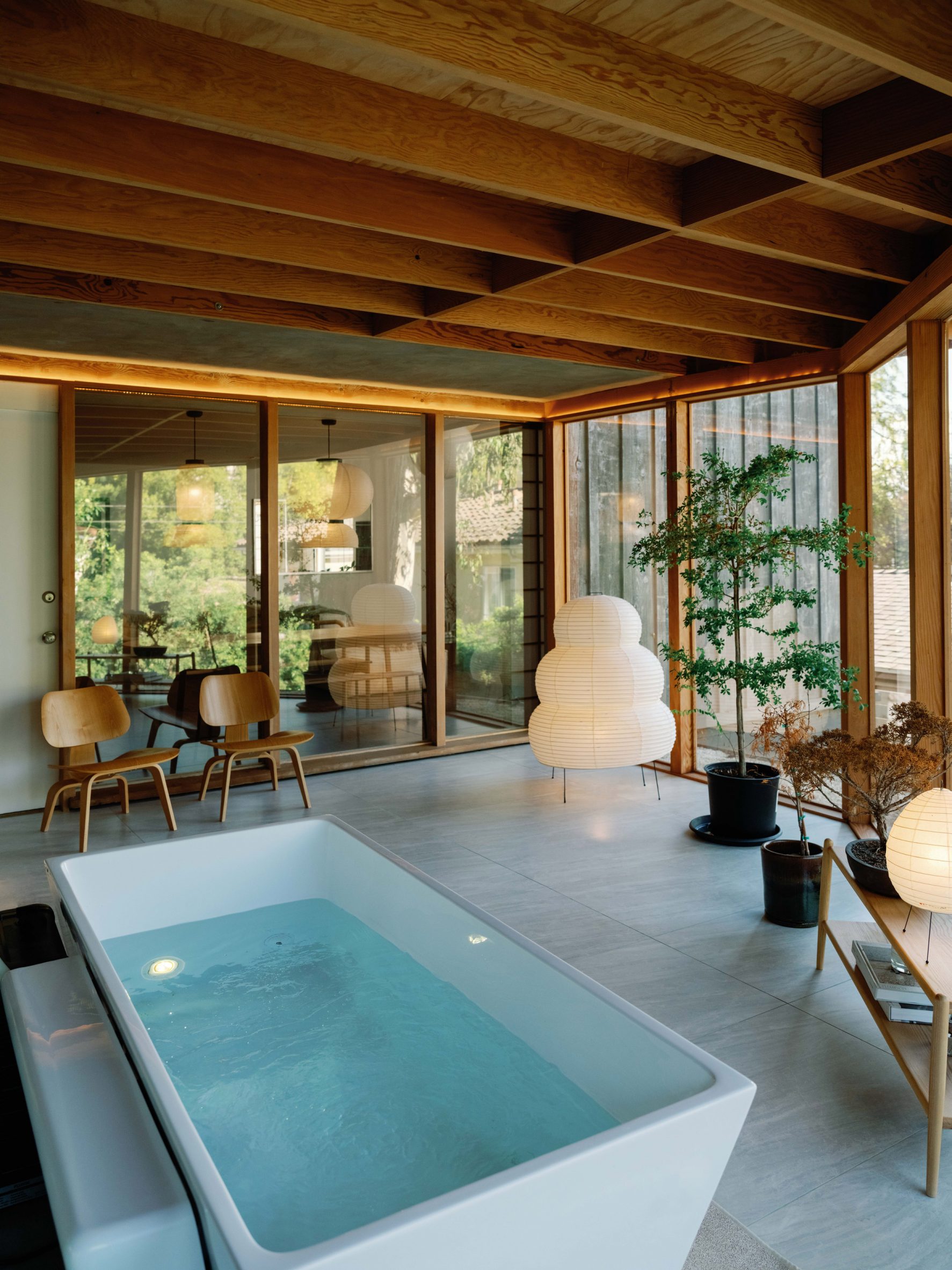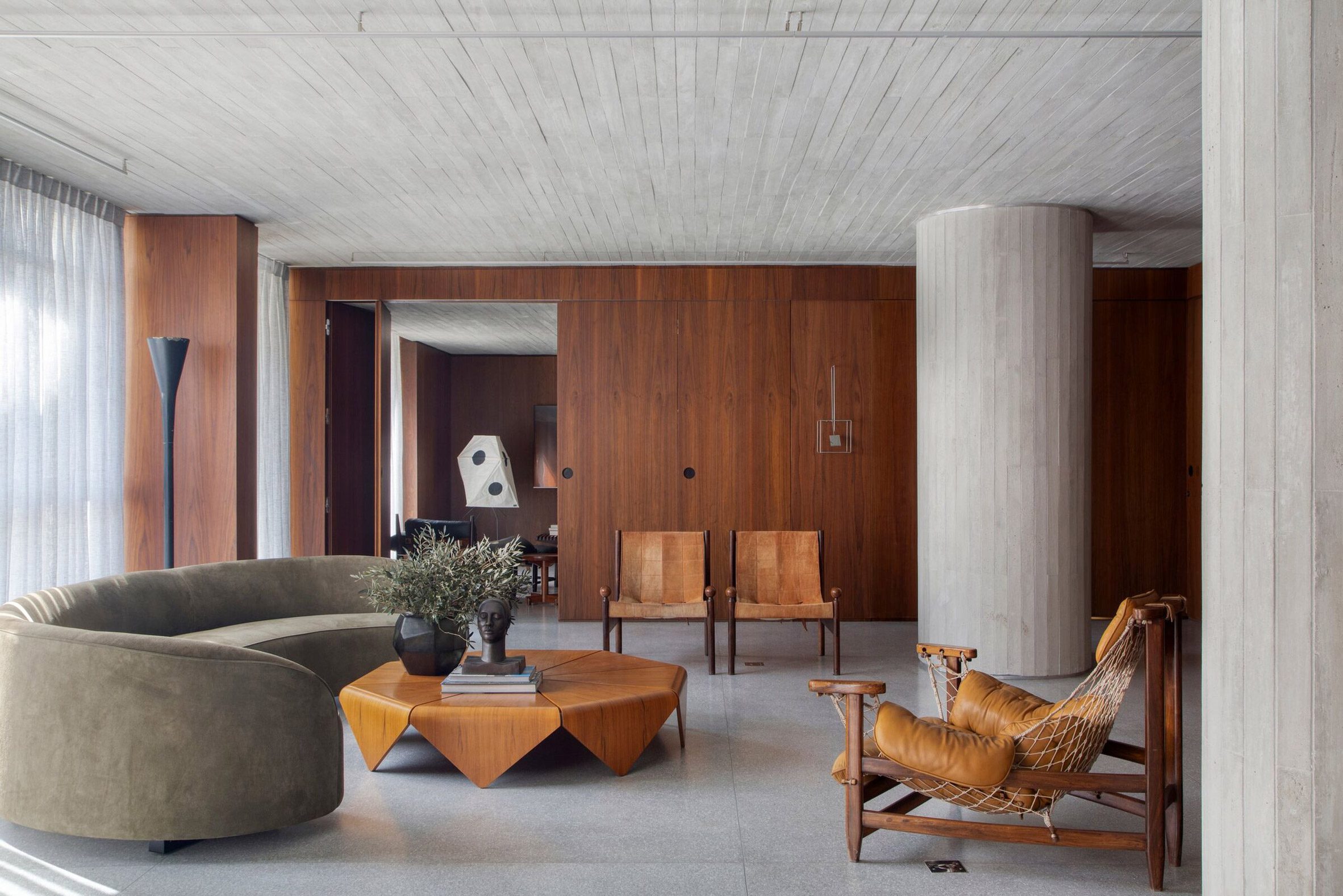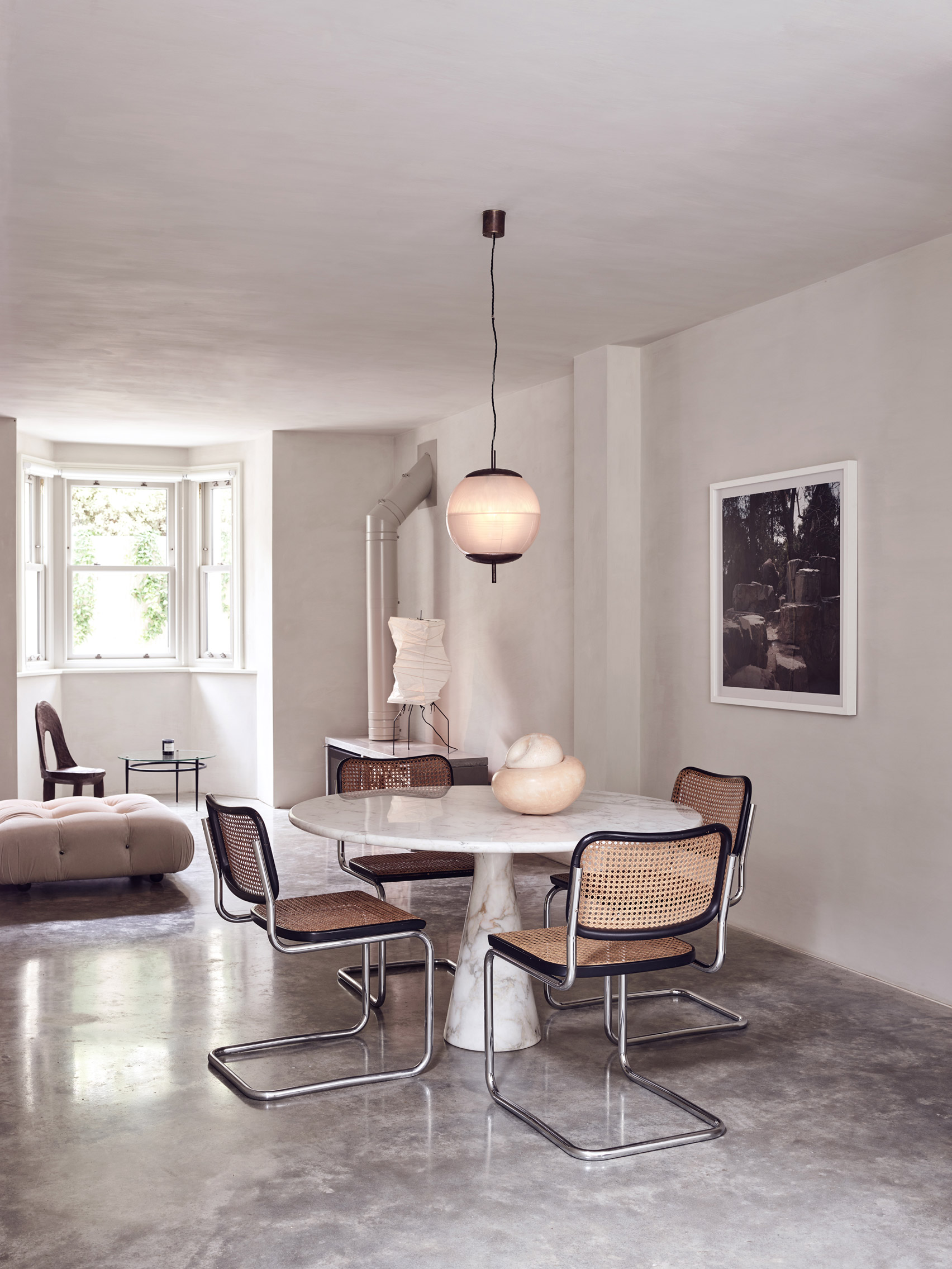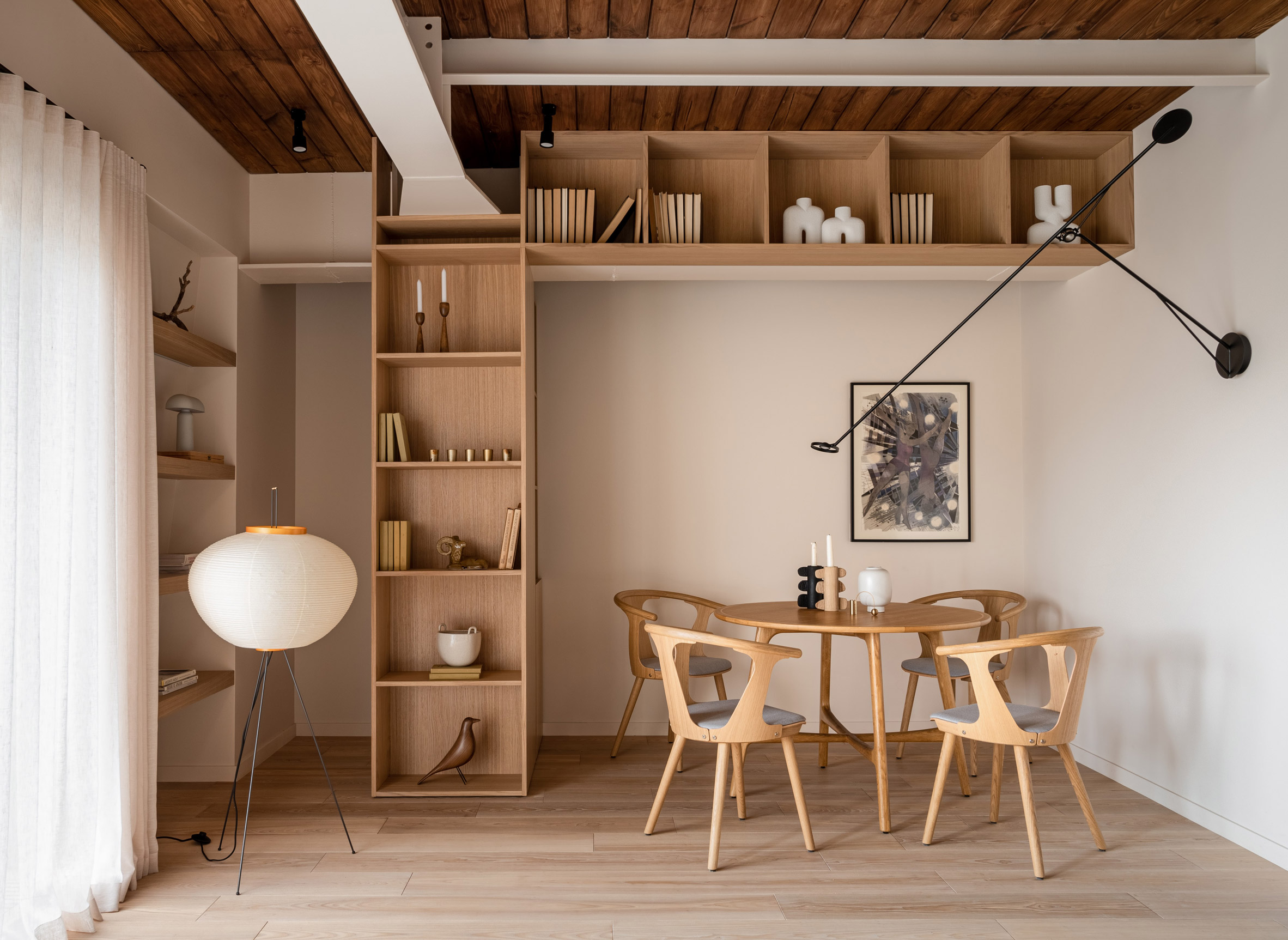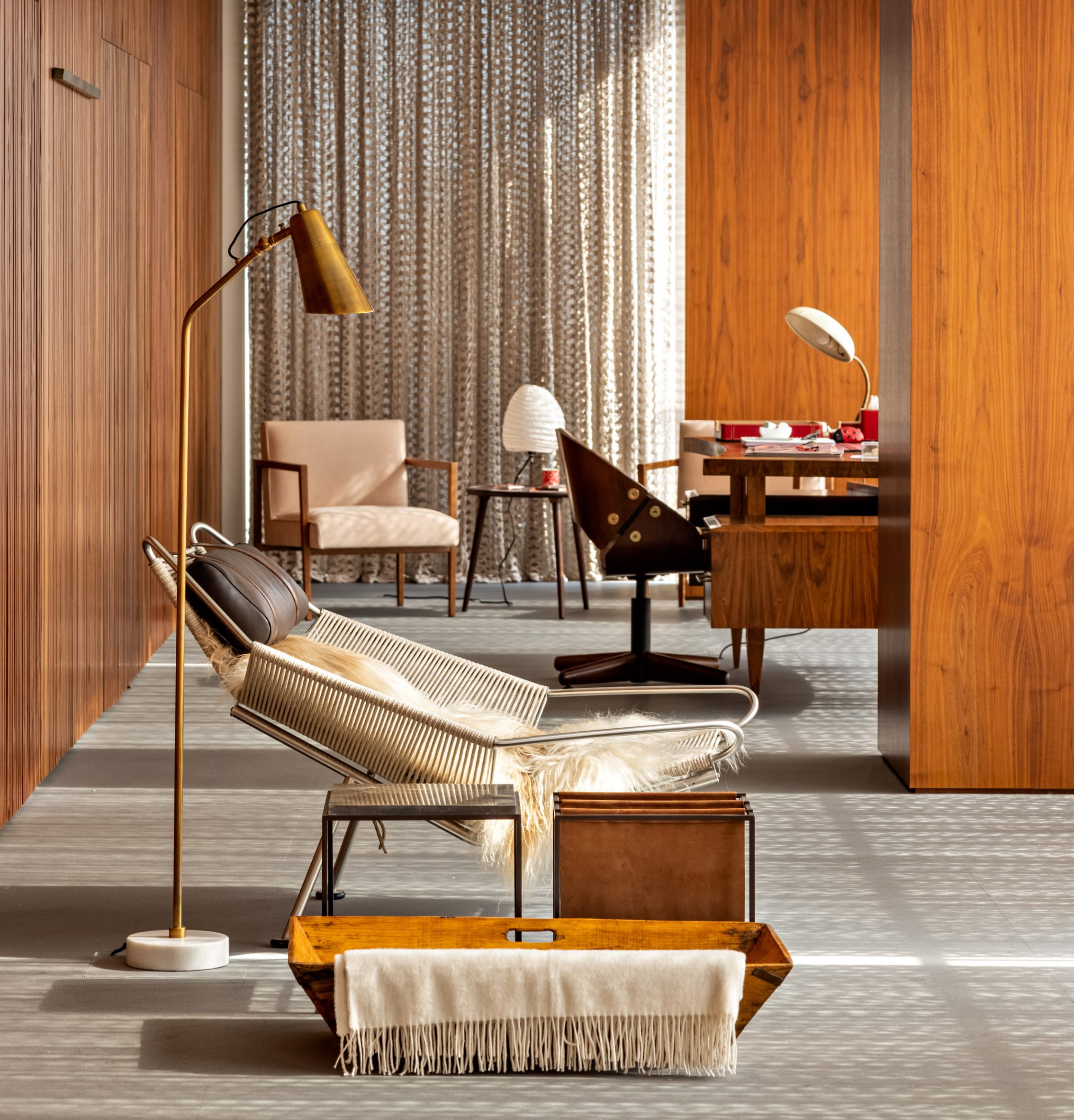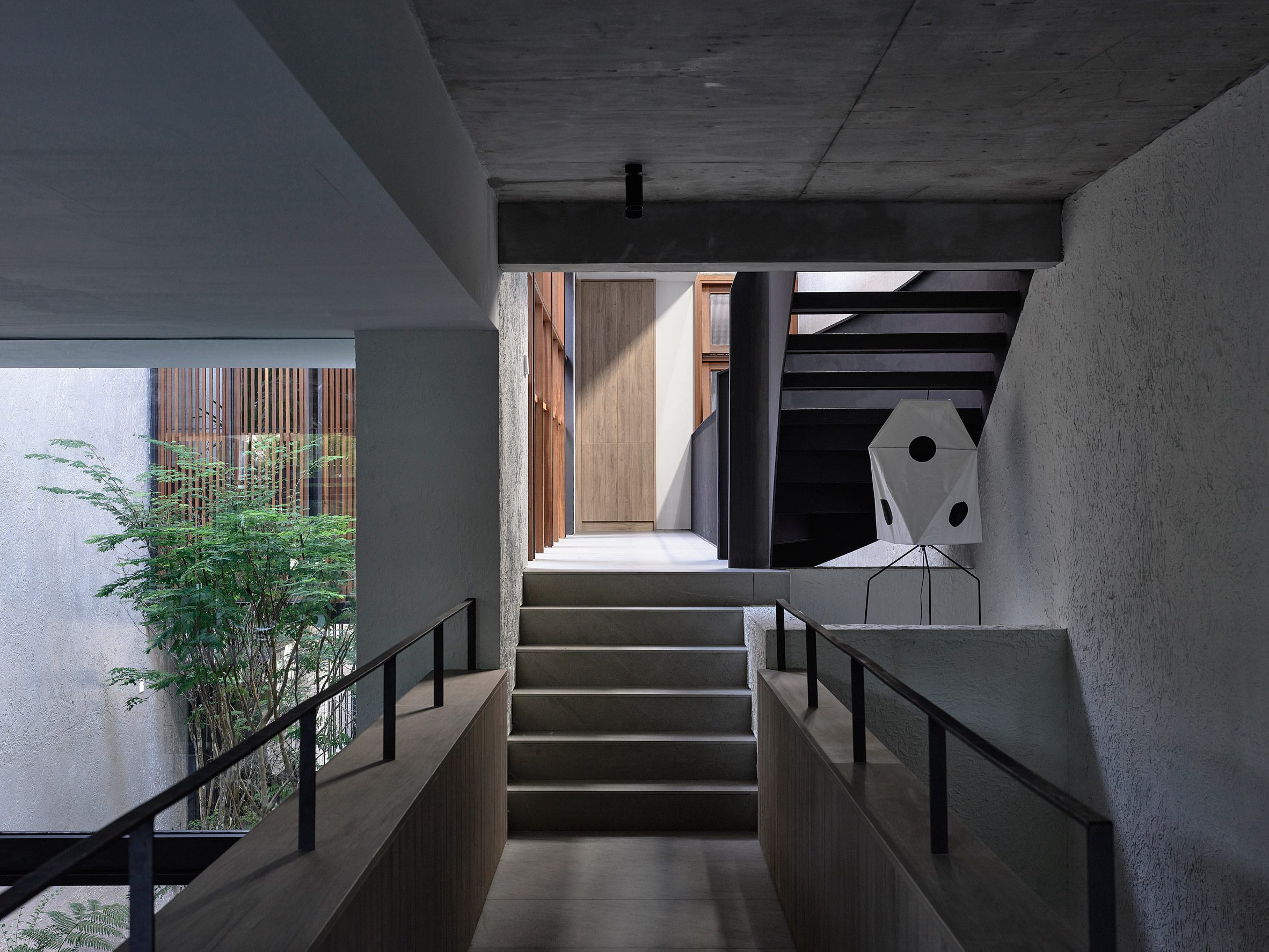Seven minimalist bedrooms where wood adds visual interest
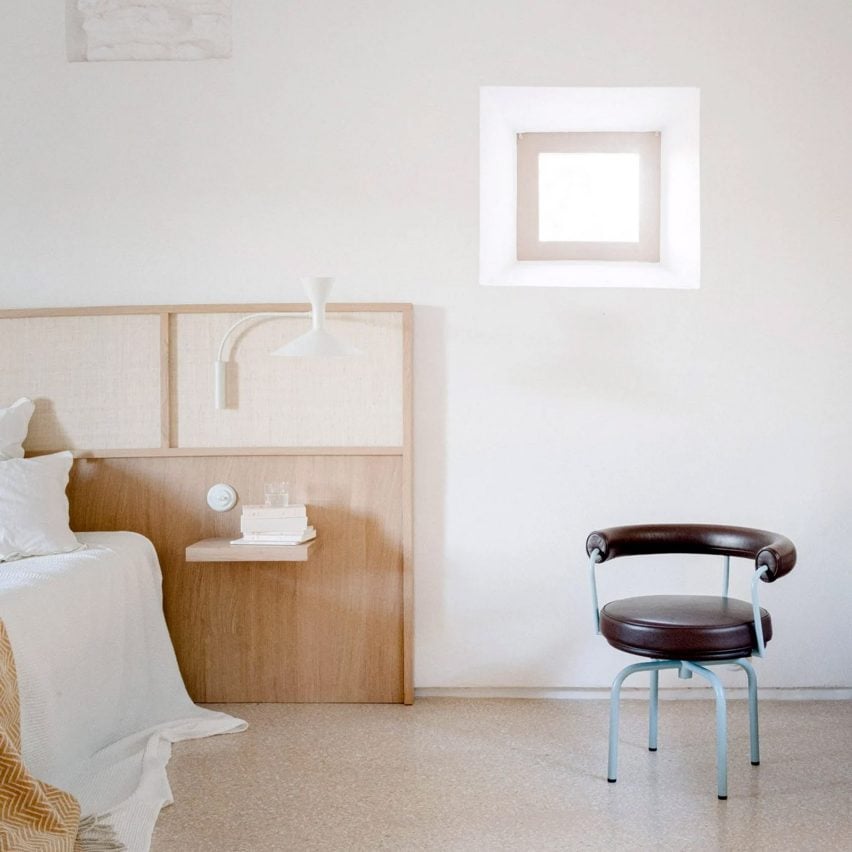
This lookbook collects seven minimalist bedroom interiors where designers have embraced wooden details to introduce natural warmth and texture.
Wood is often seen as an indispensable material in minimalism, particularly in pared-back bedroom interiors, where it adds much-needed warmth and cosiness.
Whether in the form of a sleek contemporary bed frame or a rustic armchair, the examples in this roundup testify to this idea, showcasing wood’s potential to enrich a minimalist bedroom without compromising on simplicity and serenity.
This is the latest in our lookbooks series, which provides curated visual inspiration from Dezeen’s archive. For more inspiration, see previous lookbooks featuring sculptural Akari lamps, poured resin floors and statement-making staircases.
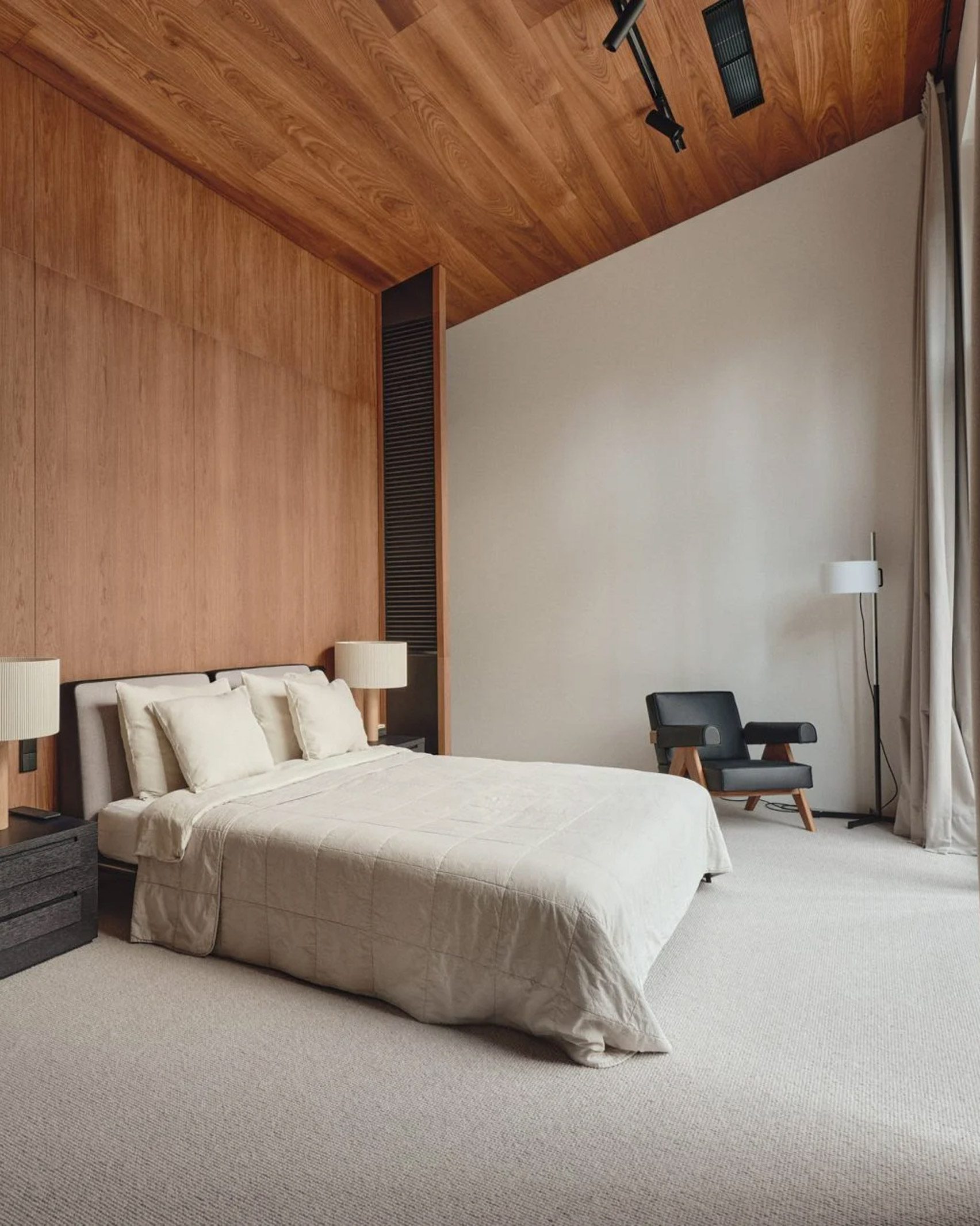
Holiday home, Estonia, by Hanna Karits
A wooden wall and ceiling add warmth and depth to this monochrome bedroom, located in a forested holiday home by interior architect Hanna Karits.
More subtle wooden details, including lamp bases and a timber-framed Pierre Jeanneret armchair, help tie the backdrop in with the space, which is otherwise finished with black and off-white furnishings.
Find out more about this holiday home ›
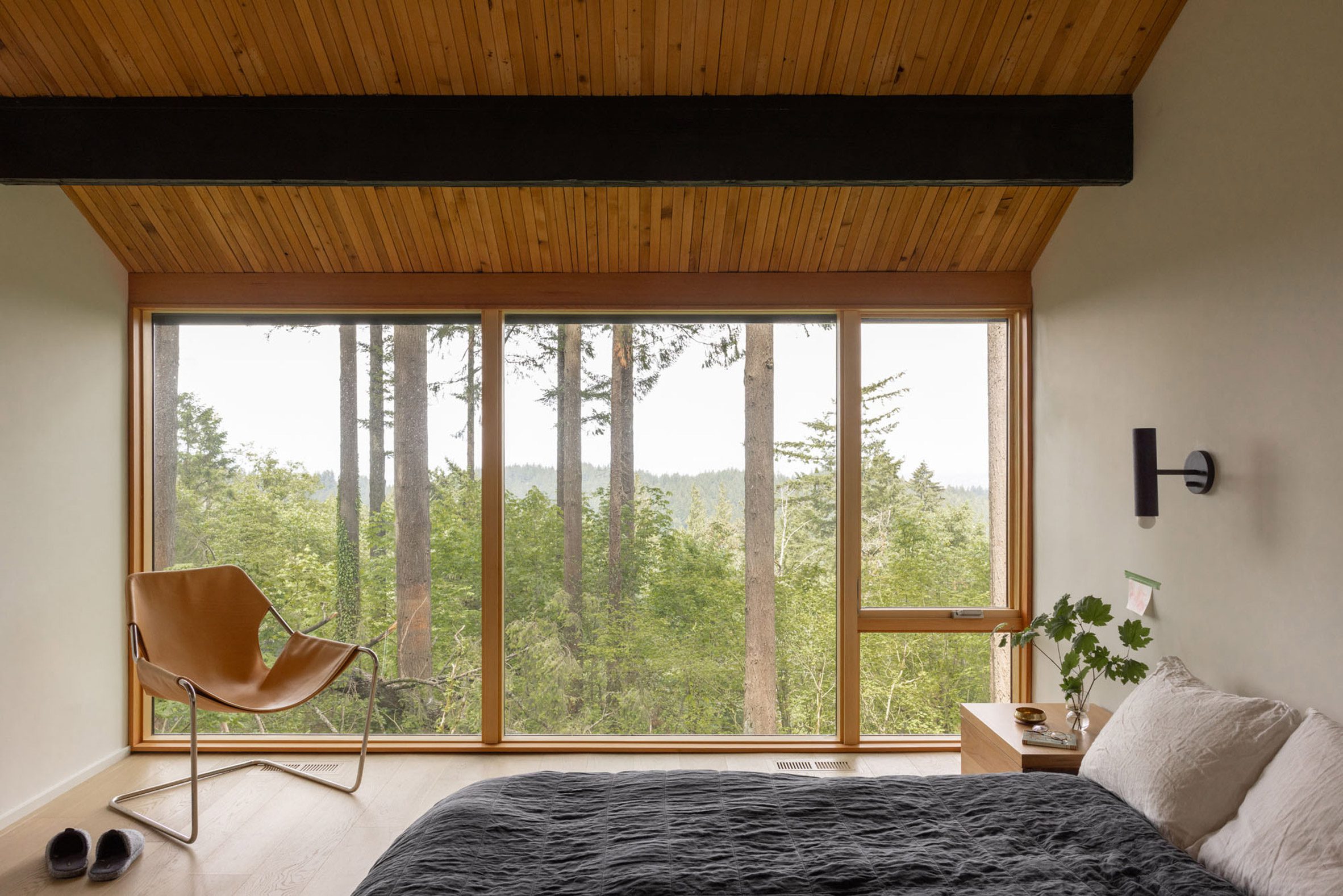
Mori House, USA, by SHED Architecture & Design
This pared-back bedroom is located within Mori House, a home built in 1963 but recently renovated by US studio SHED Architecture & Design.
Its neutral furnishings are paired with layers of wood in the form of flooring, ceiling panels and bedside tables. These add visual interest to the space while connecting the room to its forested surroundings, visible through the large wood-framed windows.
Find out more about Mori House ›
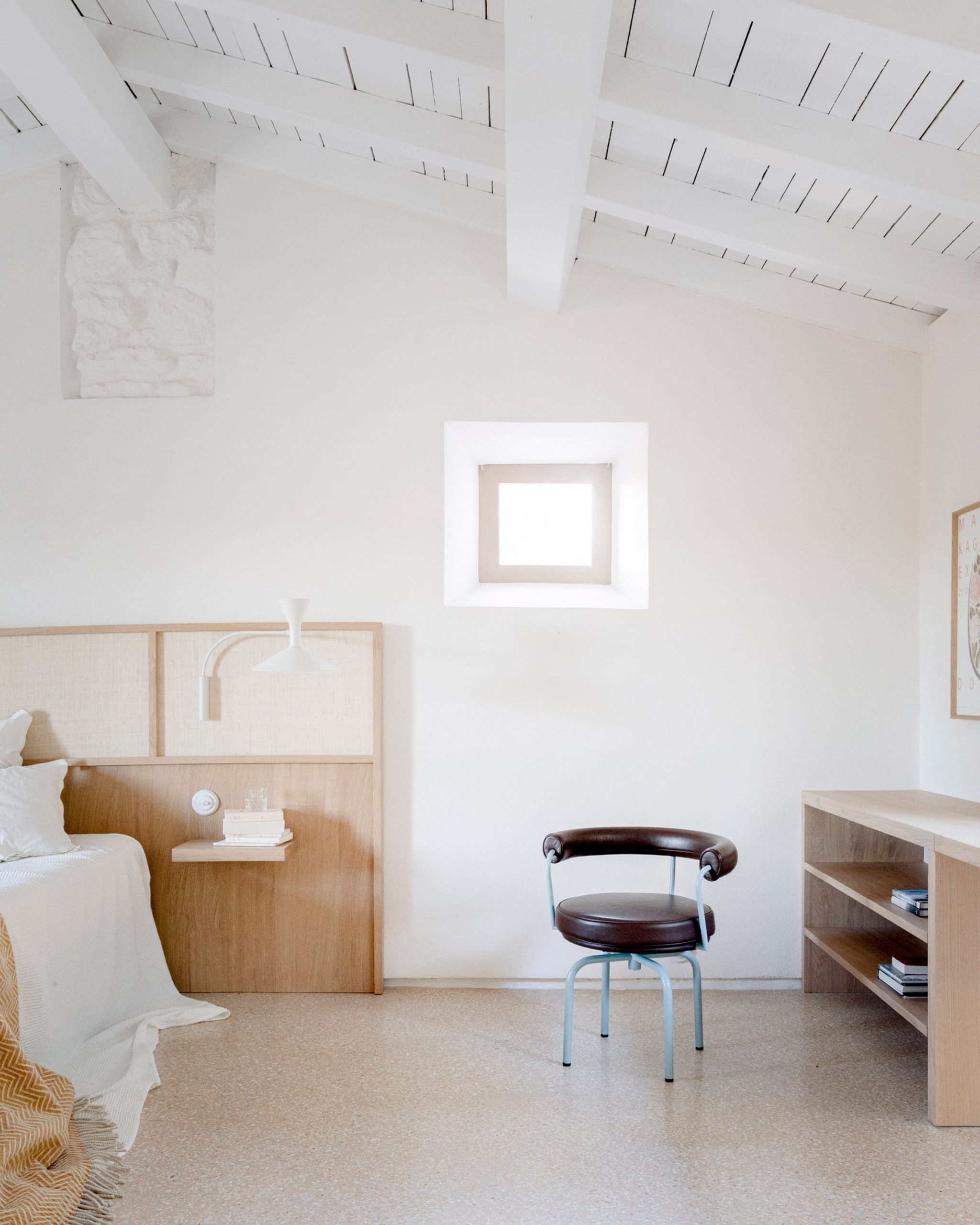
MA House, France, by Studio XM
During a minimalist makeover of this old farm building in Vaucluse, architect Timothee Mercier aimed to emulate the “monastic qualities” of the surrounding landscape.
In the main bedroom, a bedframe made from oak and raffia sits against the whitewashed walls. Oak was also used for the desk, which is paired with an aubergine-coloured chair by Cassina.
“I decided early on to infuse the house with the monastic qualities of its surroundings,” Mercier told Dezeen. “The project tried to stay clear of fuss and clutter.”
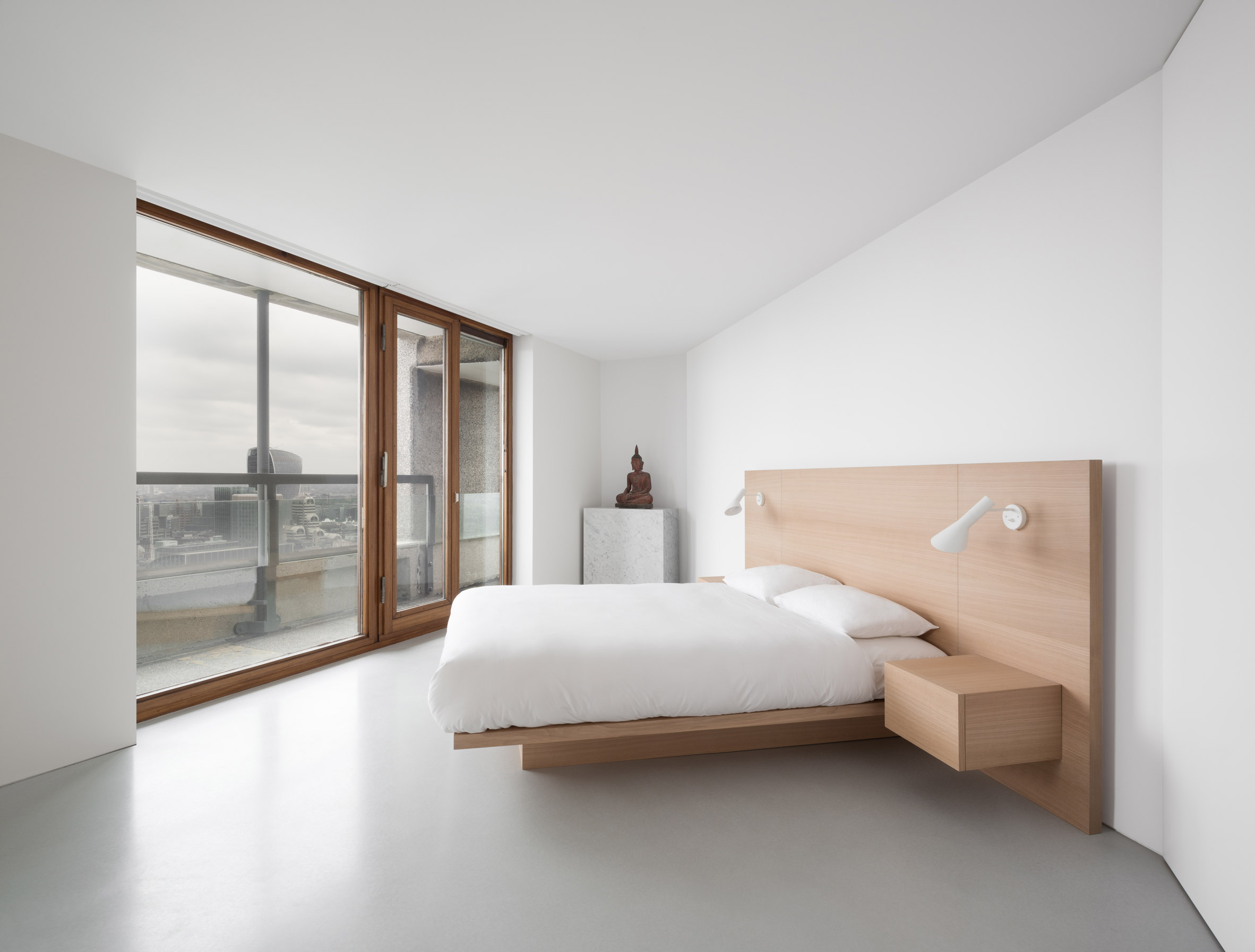
Barbican flat, UK, by John Pawson
John Pawson applied his trademark minimalist style to this apartment in London’s Barbican estate, adorning its bright white surfaces with just a handful of furnishings.
Among them is a wooden bedframe with an oversized headboard, providing the space with a sculptural centrepiece without overpowering the deliberately sparse aesthetic.
Alongside it sits a marble plinth displaying a Buddha figurine – one of only five personal items the clients chose to display in their home.
Find out more about this Barbican flat ›
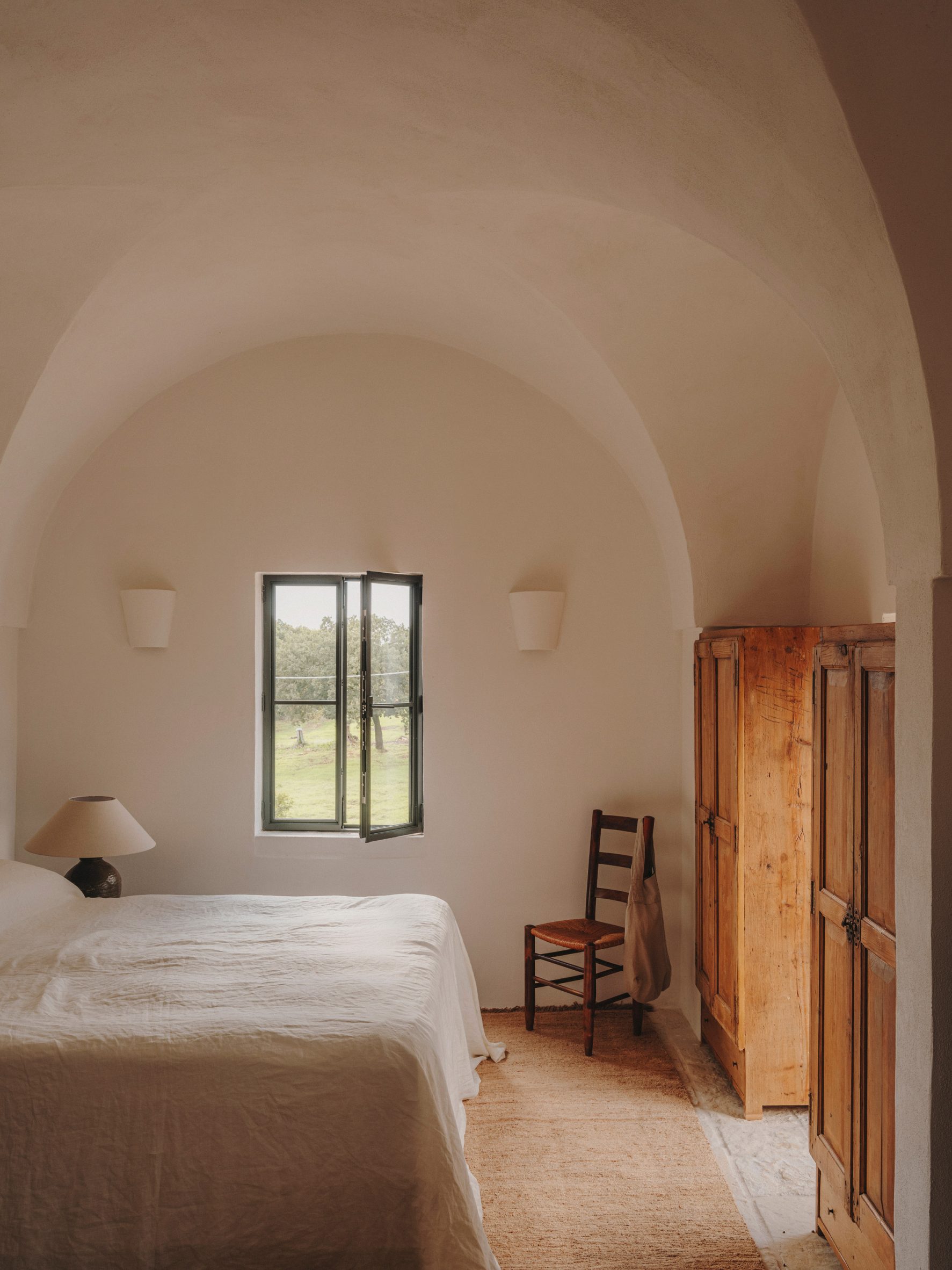
Casolare Scarani, Italy, by Studio Andrew Trotter
Rustic wooden wardrobes and a Shaker chair add texture to this stripped-back, plaster-walled bedroom, located in Casolare Scarani in Puglia.
Studio Andrew Trotter designed the interior as part of an overhaul of the building, which was once a school for girls. The studio aimed to keep alterations and furnishings to a minimum to retain focus on its original character and detailing, such as the vaulted ceilings.
Find out more about Casolare Scarani ›
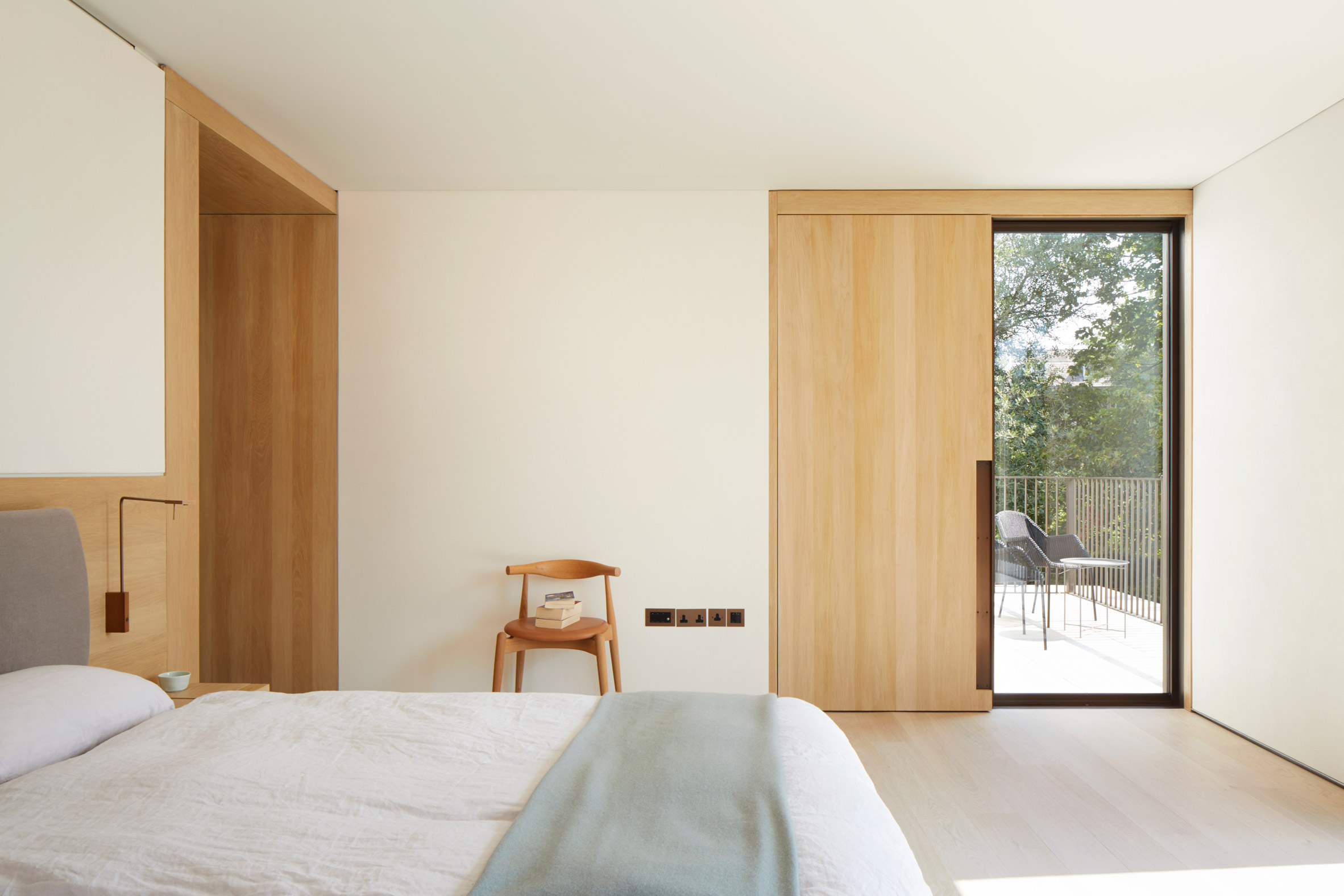
Fleet House, UK, by Stanton Williams
Pale wooden finishes and white walls dominate the interiors of this house in London’s Hampstead by local studio Stanton Williams, including its uncluttered bedroom featuring an Elbow Chair by Hans J Wegner.
According to the studio, the minimalist design was chosen to provide the client with a “contemporary but timeless” home.
Find out more about Fleet House ›
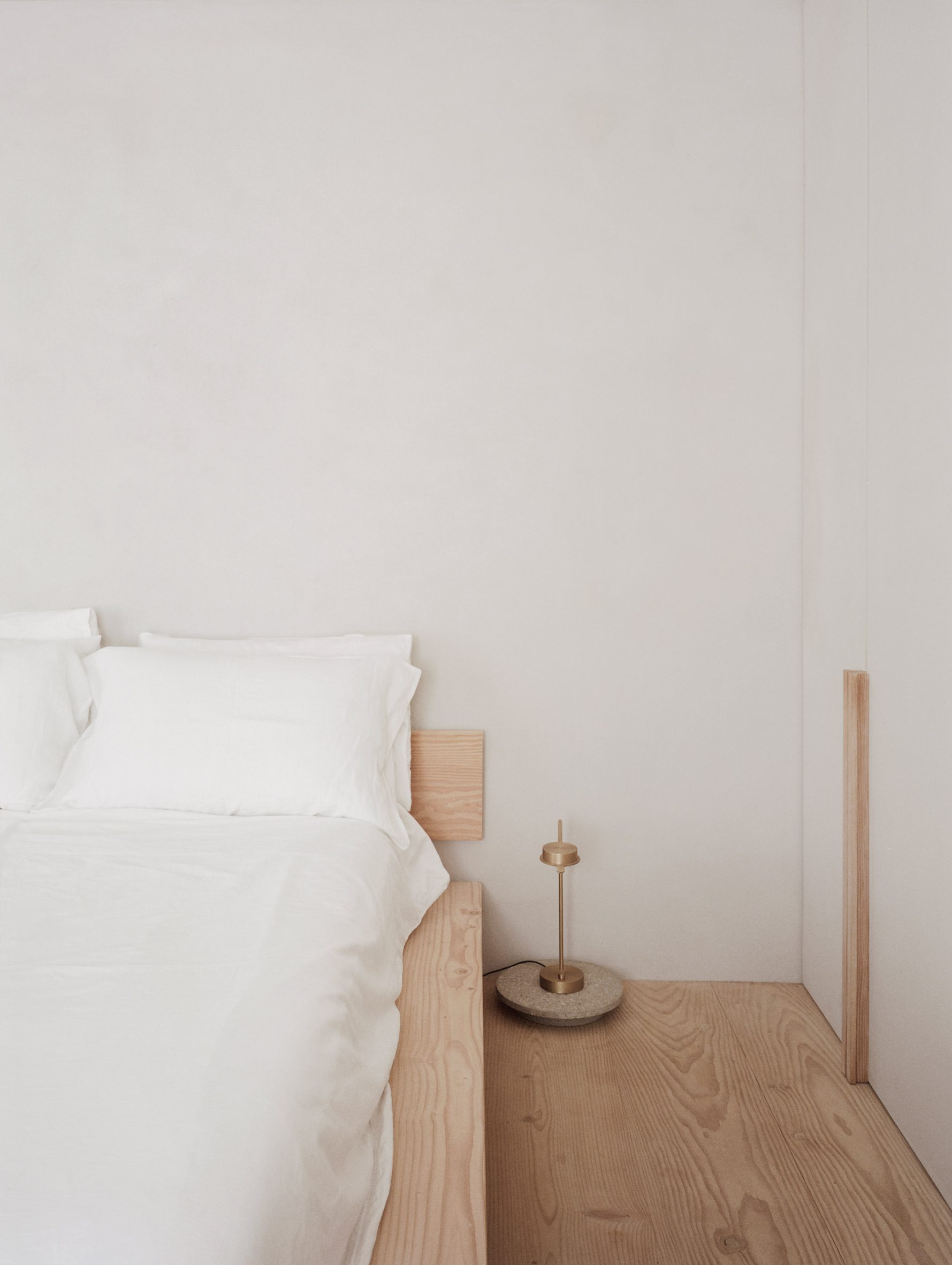
Low Energy House, UK, by Architecture for London
UK studio Architecture for London achieved a minimalist interior for its Low Energy House by using a restrained palette of natural materials.
In the main bedroom, this saw white-plaster walls and simple bed linens teamed with chunky Douglas fir floorboards and a bedframe with prominent wood grain, adding texture and tactility to the room.
Find out more about Low Energy House ›
This is the latest in our lookbooks series, which provides curated visual inspiration from Dezeen’s archive. For more inspiration, see previous lookbooks featuring sculptural Akari lamps, poured resin floors and statement-making staircases.
The post Seven minimalist bedrooms where wood adds visual interest appeared first on Dezeen.












